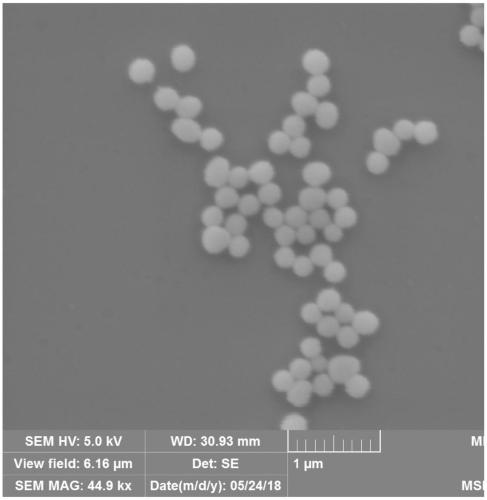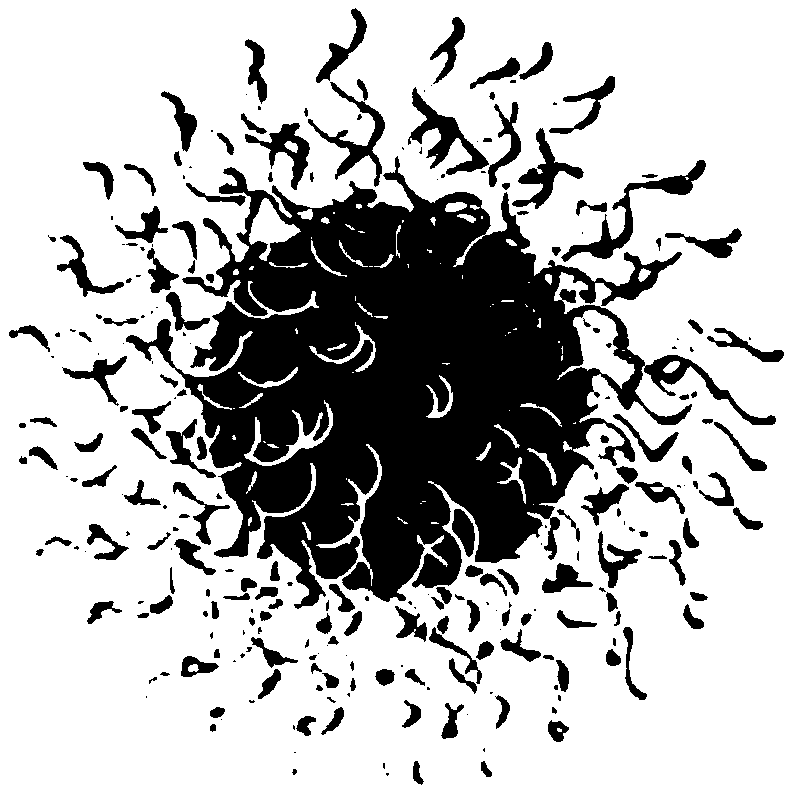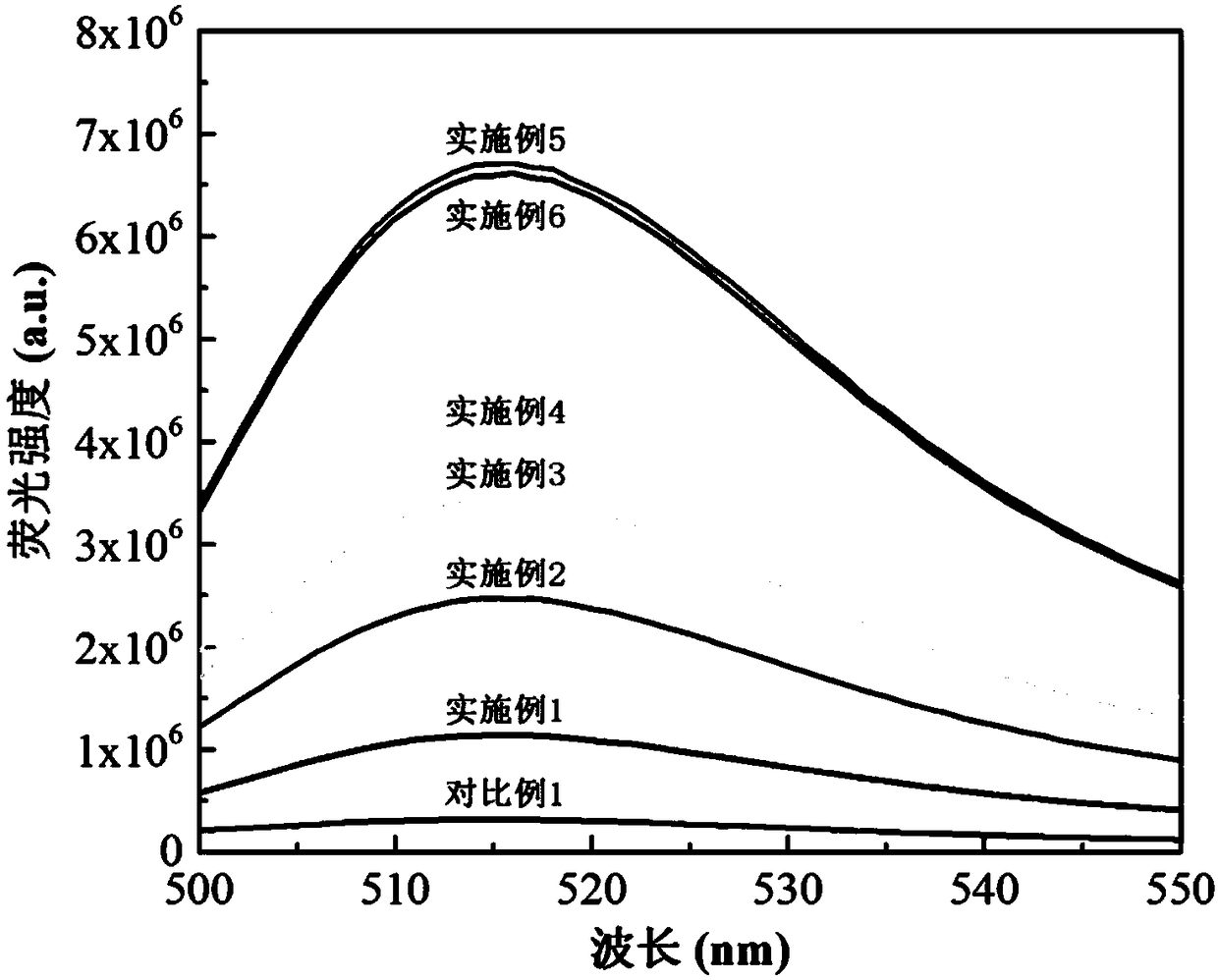Method for grafting DNA on polydopamine nanoparticle surface with controllable density
A nanoparticle and polydopamine technology, applied in the field of nanobiology, can solve the problems of research, controllable density of DNA grafting on the surface of PDA nanoparticles, etc., and achieve the effect of broad application space
- Summary
- Abstract
- Description
- Claims
- Application Information
AI Technical Summary
Problems solved by technology
Method used
Image
Examples
Embodiment 1-6
[0079] A DNA-grafted polydopamine nanoparticle, the preparation method of which is as follows:
[0080] (1) Preparation of polydopamine nanoparticles with a particle size of 250nm
[0081] Add 500.0mg dopamine hydrochloride to the mixed solution of 100.0mL ultrapure water, 40.0mL ethanol and 1.0mL ammonia water, centrifuge (48000RCF) and wash three times with ultrapure water after sealing at room temperature and stirring for 24 hours, wherein, the polydopamine nanoparticle surface of gained Zeta potential was -15.43±1.61mV.
[0082] (2) Preparation of ssDNA1 grafted polydopamine nanoparticles
[0083] The concentration of polydopamine nanoparticles is controlled to be 50.0 μg / mL, the concentration of DNA is 1.0 μM, the reaction is carried out in Tris-HCl (10.0 mM) buffer solution with pH=8.5, sodium chloride is added, and the total volume of the reaction system is controlled to be 100 μL , and the reaction time was 8 hours; after that, it was centrifuged (48000RCF) and washe...
Embodiment 7-12
[0086] The only difference from Examples 1-6 is that in this example, ssDNA1 is replaced by ssDNA2.
Embodiment 13-18
[0088] The only difference with Example 1 is that in this example, sodium chloride is replaced by magnesium chloride, and the concentration of magnesium chloride is controlled to be 0.001mol / L (embodiment 13), 0.005mol / L (embodiment 14), 0.025mol / L (Example 15), 0.1mol / L (Example 16), 0.5mol / L (Example 17), 2mol / L (Example 18).
PUM
| Property | Measurement | Unit |
|---|---|---|
| particle diameter | aaaaa | aaaaa |
| concentration | aaaaa | aaaaa |
| particle size | aaaaa | aaaaa |
Abstract
Description
Claims
Application Information
 Login to View More
Login to View More - R&D
- Intellectual Property
- Life Sciences
- Materials
- Tech Scout
- Unparalleled Data Quality
- Higher Quality Content
- 60% Fewer Hallucinations
Browse by: Latest US Patents, China's latest patents, Technical Efficacy Thesaurus, Application Domain, Technology Topic, Popular Technical Reports.
© 2025 PatSnap. All rights reserved.Legal|Privacy policy|Modern Slavery Act Transparency Statement|Sitemap|About US| Contact US: help@patsnap.com



